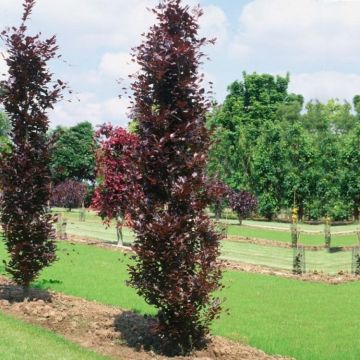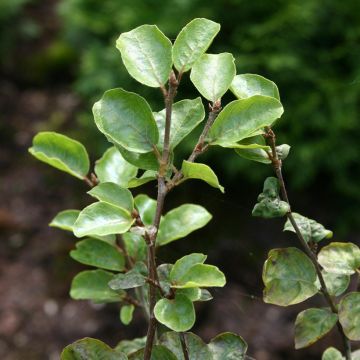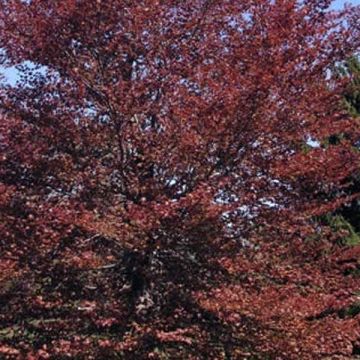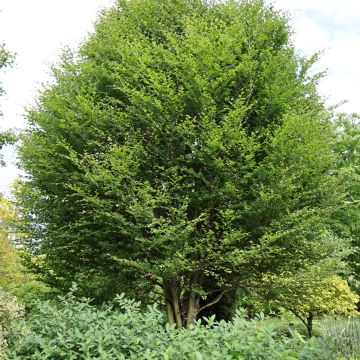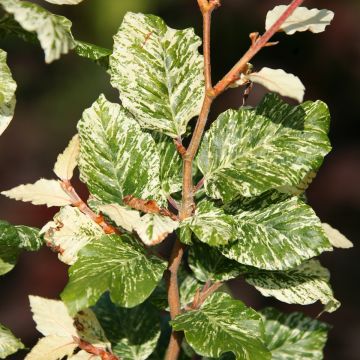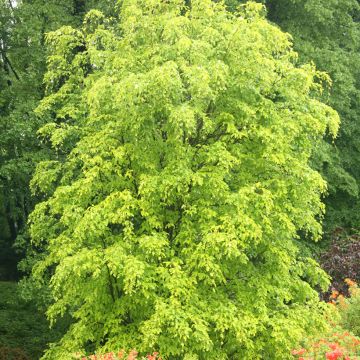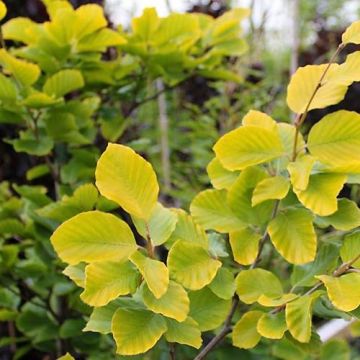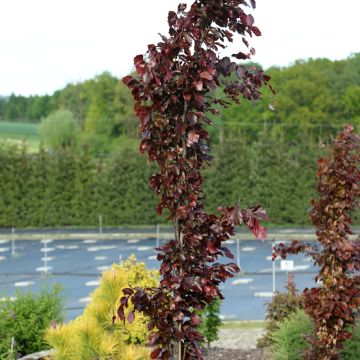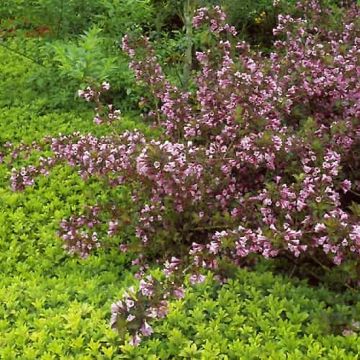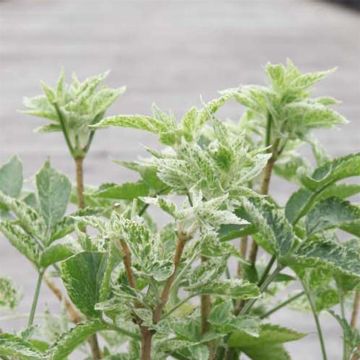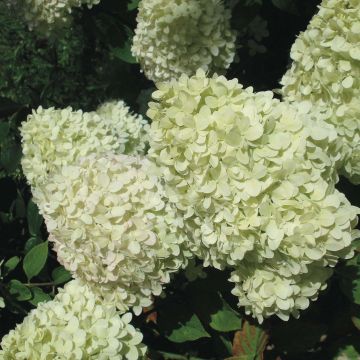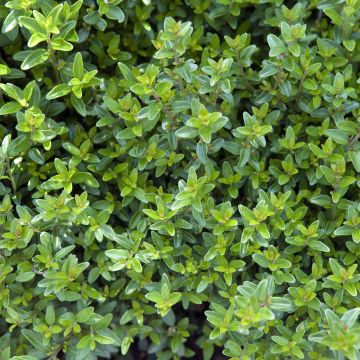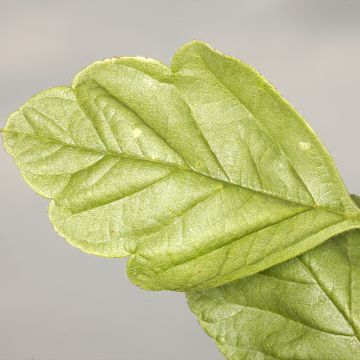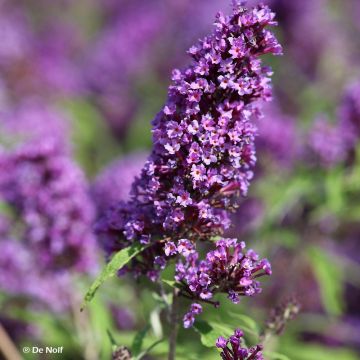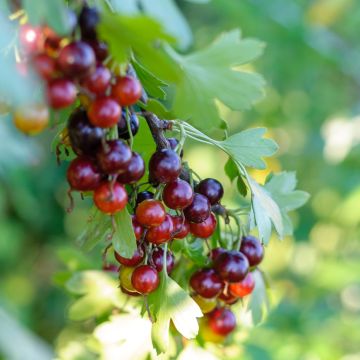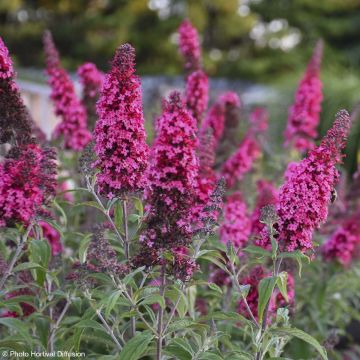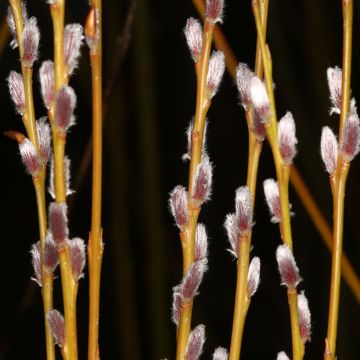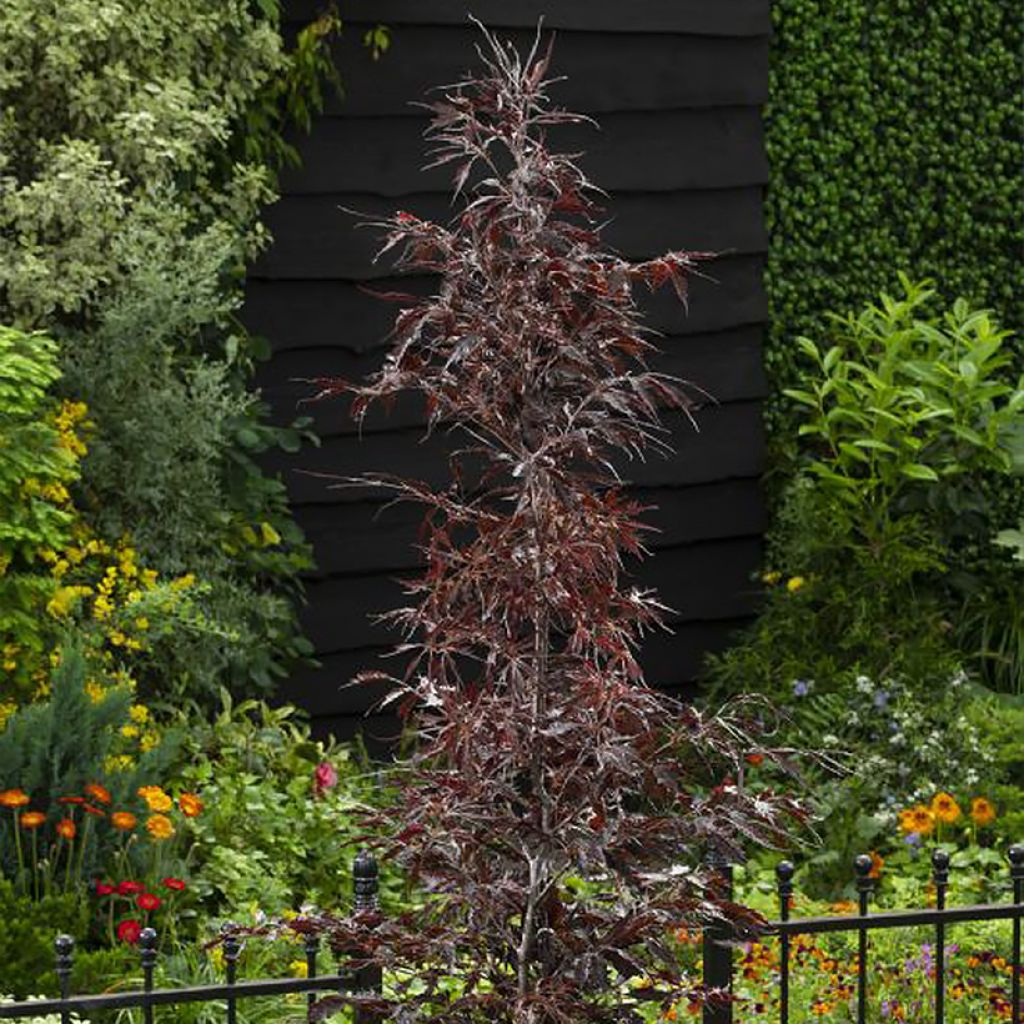

Fagus sylvatica Midnight Feather - Beech
Fagus sylvatica Midnight Feather - Beech
Fagus sylvatica Midnight Feather 'Verschuurfag1'
European Beech, Common Beech
This item cannot be shipped to the selected country
Oversize package delivery charge from €6.90
Delivery to Corse prohibited
More information
Schedule delivery date,
and select date in basket
This plant carries a 24 months recovery warranty
More information
We guarantee the quality of our plants for a full growing cycle, and will replace at our expense any plant that fails to recover under normal climatic and planting conditions.
Oversize package: home delivery by special carrier from €6.90 per order..
Express home delivery from €8.90.
Delivery to Corse prohibited: UE law prohibits the import of this plant from mainland France to Corse as part of the fight against Xylella fastidiosa. Please accept our sincere apologies.
More information

Does this plant fit my garden?
Set up your Plantfit profile →
Description
The Fagus sylvatica Midnight Feather is an astonishing selection of the Purple Beech, particularly elegant with its highly colourful and fine-textured foliage, its slender habit, and moderate growth. Its narrow and dissected leaves, red from spring, become almost black in summer. This tree, which is reminiscent of a Japanese maple, proves to be more tolerant than it and will replace it advantageously in limestone soils. And its modest size allows it to be accommodated in gardens of all sizes.
The beech, in Latin Fagus sylvatica, is an imposing tree of the Fagaceae family. Native to Central Europe to the Caucasus, it is one of the most common species in European forests. The Midnight Feather cultivar (also known as Black Rianne) is a recent Dutch horticultural selection. This tree, of moderately fast growth, has a naturally slender habit. Its trunk is straight, thickening rapidly. It supports a narrow and light crown. At maturity, it should reach about 5m (16 ft 5 in) in height and 2m (6 ft 7 in) in spread. Its foliage is composed of deeply lobed leaves. They appear in spring. Coppery red at bud break, they gradually turn purple and become purplish-black in summer. They are marcescent, meaning they dry up while remaining on the tree until the following spring, when new leaves emerge. The flowers appear almost at the same time as the leaves, from April to May. Barely visible, they are cream-coloured. The male flowers, separate from the female flowers, are grouped in pendant catkins of 40 to 60mm (1.6 to 2.4 in). The female flowers are clustered in groups of 2 to 4 at the ends of the branches. Mature specimens produce fruits called beech nuts, shiny brown and covered with prickles. These fruits, 12 to 18mm (0.5 to 0.7 in) long, are edible in small quantities. Mountain dwellers used to use them to make flour.
The Fagus sylvatica Midnight Feather is a very hardy and truly elegant tree, easy to grow. However, it prefers temperate or mountainous climates and will suffer in climates where summers are too hot and dry. When planted in isolation, it is self-sufficient, constituting a focal point in the garden. You can plant a pretty ground cover of perennial geraniums or periwinkles at its base.
Report an error about the product description
Fagus sylvatica Midnight Feather - Beech in pictures
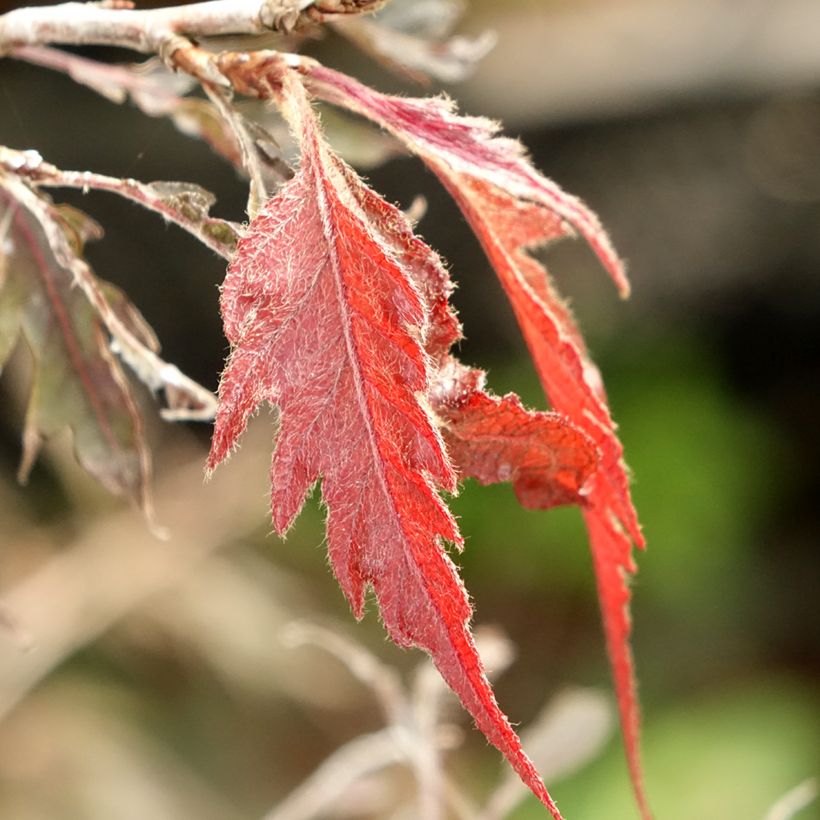

Plant habit
Flowering
Foliage
Botanical data
Fagus
sylvatica
Midnight Feather 'Verschuurfag1'
Fagaceae
European Beech, Common Beech
Cultivar or hybrid
Other Fagus - Beech
Planting and care
The Fagus sylvatica Midnight Feather can be planted in full sun or partial shade: a sunny exposure will enhance the colour of its foliage. It prefers cool and temperate or mountainous climates. The soil should be well-drained, slightly acidic to alkaline, and consistently moist to occasionally dry. In February-March, when the tree is dormant, remove any stems that compromise symmetry or are tangled to maintain a good habit. Beware of aphids and scale insects as well as mildew.
Planting period
Intended location
Care
-
, onOrder confirmed
Reply from on Promesse de fleurs
Hedge shrubs
Haven't found what you were looking for?
Hardiness is the lowest winter temperature a plant can endure without suffering serious damage or even dying. However, hardiness is affected by location (a sheltered area, such as a patio), protection (winter cover) and soil type (hardiness is improved by well-drained soil).

Photo Sharing Terms & Conditions
In order to encourage gardeners to interact and share their experiences, Promesse de fleurs offers various media enabling content to be uploaded onto its Site - in particular via the ‘Photo sharing’ module.
The User agrees to refrain from:
- Posting any content that is illegal, prejudicial, insulting, racist, inciteful to hatred, revisionist, contrary to public decency, that infringes on privacy or on the privacy rights of third parties, in particular the publicity rights of persons and goods, intellectual property rights, or the right to privacy.
- Submitting content on behalf of a third party;
- Impersonate the identity of a third party and/or publish any personal information about a third party;
In general, the User undertakes to refrain from any unethical behaviour.
All Content (in particular text, comments, files, images, photos, videos, creative works, etc.), which may be subject to property or intellectual property rights, image or other private rights, shall remain the property of the User, subject to the limited rights granted by the terms of the licence granted by Promesse de fleurs as stated below. Users are at liberty to publish or not to publish such Content on the Site, notably via the ‘Photo Sharing’ facility, and accept that this Content shall be made public and freely accessible, notably on the Internet.
Users further acknowledge, undertake to have ,and guarantee that they hold all necessary rights and permissions to publish such material on the Site, in particular with regard to the legislation in force pertaining to any privacy, property, intellectual property, image, or contractual rights, or rights of any other nature. By publishing such Content on the Site, Users acknowledge accepting full liability as publishers of the Content within the meaning of the law, and grant Promesse de fleurs, free of charge, an inclusive, worldwide licence for the said Content for the entire duration of its publication, including all reproduction, representation, up/downloading, displaying, performing, transmission, and storage rights.
Users also grant permission for their name to be linked to the Content and accept that this link may not always be made available.
By engaging in posting material, Users consent to their Content becoming automatically accessible on the Internet, in particular on other sites and/or blogs and/or web pages of the Promesse de fleurs site, including in particular social pages and the Promesse de fleurs catalogue.
Users may secure the removal of entrusted content free of charge by issuing a simple request via our contact form.
The flowering period indicated on our website applies to countries and regions located in USDA zone 8 (France, the United Kingdom, Ireland, the Netherlands, etc.)
It will vary according to where you live:
- In zones 9 to 10 (Italy, Spain, Greece, etc.), flowering will occur about 2 to 4 weeks earlier.
- In zones 6 to 7 (Germany, Poland, Slovenia, and lower mountainous regions), flowering will be delayed by 2 to 3 weeks.
- In zone 5 (Central Europe, Scandinavia), blooming will be delayed by 3 to 5 weeks.
In temperate climates, pruning of spring-flowering shrubs (forsythia, spireas, etc.) should be done just after flowering.
Pruning of summer-flowering shrubs (Indian Lilac, Perovskia, etc.) can be done in winter or spring.
In cold regions as well as with frost-sensitive plants, avoid pruning too early when severe frosts may still occur.
The planting period indicated on our website applies to countries and regions located in USDA zone 8 (France, United Kingdom, Ireland, Netherlands).
It will vary according to where you live:
- In Mediterranean zones (Marseille, Madrid, Milan, etc.), autumn and winter are the best planting periods.
- In continental zones (Strasbourg, Munich, Vienna, etc.), delay planting by 2 to 3 weeks in spring and bring it forward by 2 to 4 weeks in autumn.
- In mountainous regions (the Alps, Pyrenees, Carpathians, etc.), it is best to plant in late spring (May-June) or late summer (August-September).
The harvesting period indicated on our website applies to countries and regions in USDA zone 8 (France, England, Ireland, the Netherlands).
In colder areas (Scandinavia, Poland, Austria...) fruit and vegetable harvests are likely to be delayed by 3-4 weeks.
In warmer areas (Italy, Spain, Greece, etc.), harvesting will probably take place earlier, depending on weather conditions.
The sowing periods indicated on our website apply to countries and regions within USDA Zone 8 (France, UK, Ireland, Netherlands).
In colder areas (Scandinavia, Poland, Austria...), delay any outdoor sowing by 3-4 weeks, or sow under glass.
In warmer climes (Italy, Spain, Greece, etc.), bring outdoor sowing forward by a few weeks.

































